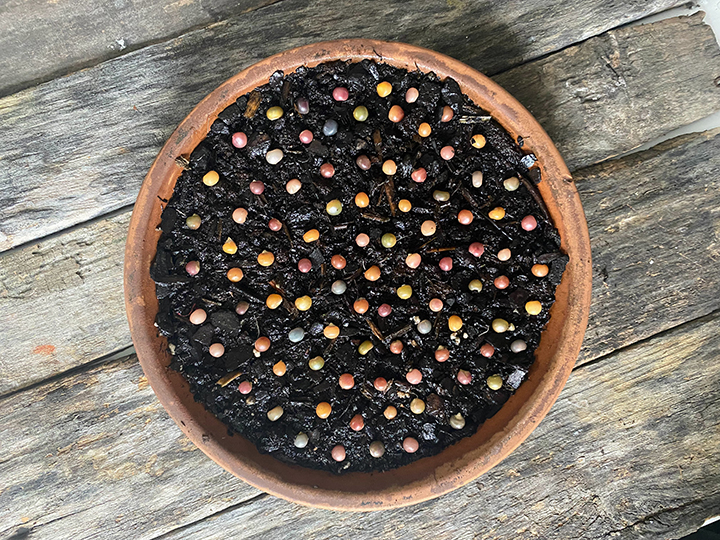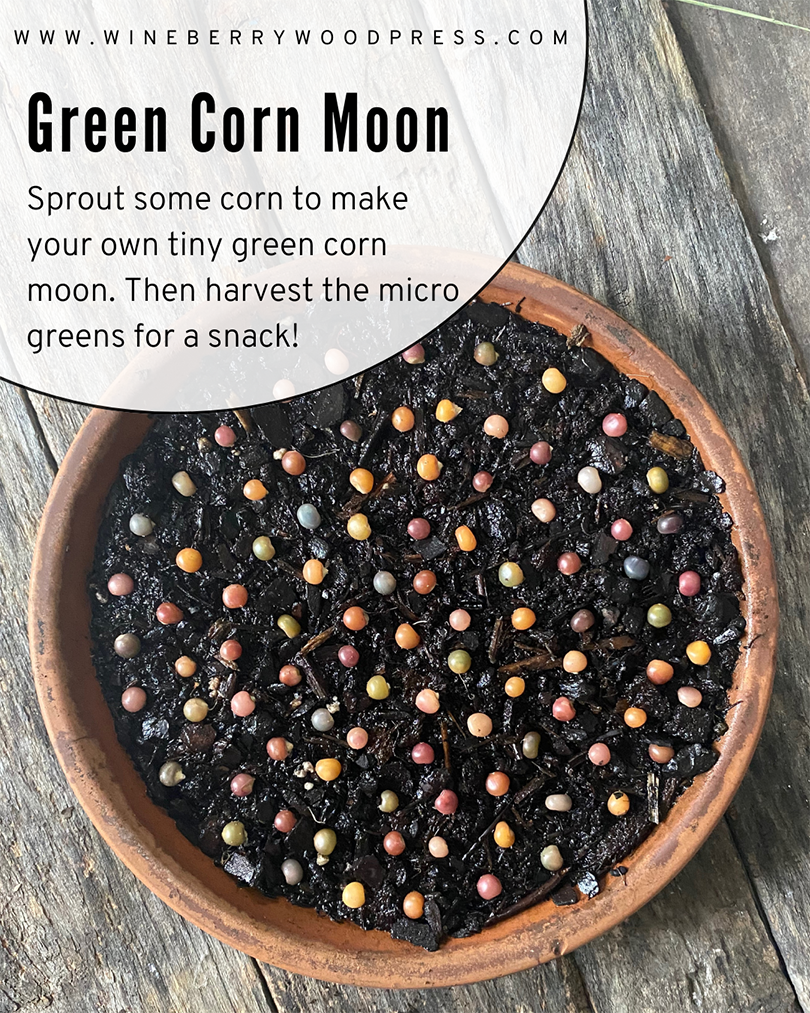
The August full moon is frequently called the Sturgeon Moon. This is because sturgeon were often caught in the late summer in the Great Lakes. I don’t live in the Great Lakes area however, and sadly I have never seen this cool fish. Instead I prefer to call this moon the Green Corn Moon because it better reflects what’s happening around me in August. Fields of corn are everywhere, and I can’t seem to eat enough of it. This name mirrors traditional names used by several tribes: (Green) Corn Moon is used by the Algonquin and Ojibwe, Harvest Moon is used by the Dakota, and Ricing Moon is used by some Anishinaabeg. All of these names make reference to gathering maturing crops. Several tribes in the southeast have Green Corn festivals and ceremonies this time of year.
“Green corn” is not corn that is the color green (although that’s a thing too), but simply sweet corn—that is, corn that is eaten fresh as opposed to mature corn that is dried and ground. It’s the same reason we call green beans green– it’s not because they are the color green, but because they are eaten in an immature stage instead of being dried. You will still find older recipes that refer to green (fresh) corn, it’s actually a fairly recent development.
Green Corn Moon Microgreens
It’s much too late in the year to plant corn and get ears of corn, but it’s a great time to sprout ears of corn (the part you eat is a also a seed!) and grown microgreens. This is a fun experiment for kids learning about seeds and it super beautiful if you use a fancy variety of corn. (I used glass gem corn in the pictures) You can also use any natural popcorn you might have on hand (no microwave bags though.) The best part is that after you grow your pretty green (literally) corn moon you can eat the microgreens in a salad! Some people even call them popcorn greens!
Materials:
- dried corn
- a terra cotta plant saucer
- potting soil
- water
Method:
This is a super simple project. Pack the saucer with damp potting soil and then arrange your corn kernels however you see fit. You can carefully place them or just throw them on.
Place in a sunny location and keep well watered until the seeds sprout. Once they have grown a few inches harvest them and try them in a salad!

